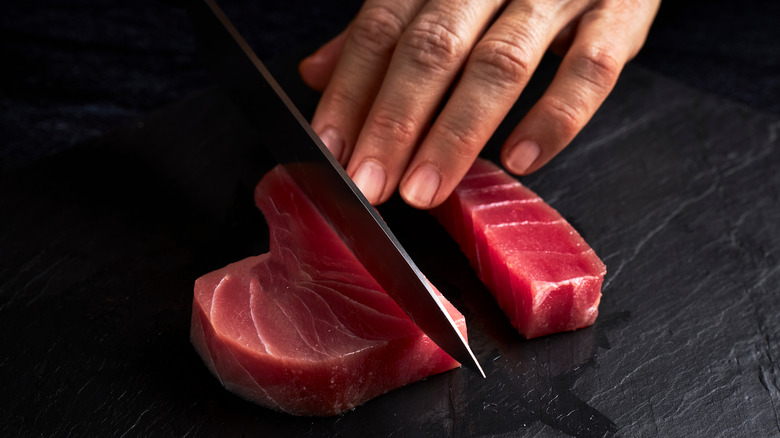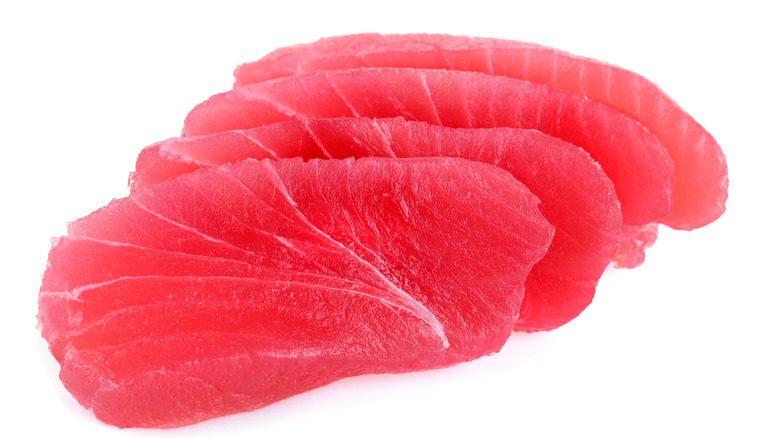The Proper Slicing Technique For Melt-In-Your-Mouth Tuna Sashimi
When it comes to appreciating tuna's flavor, no preparation method is more direct than sashimi. The Japanese technique necessitates slicing the raw fish into thin slices, making delectable bites. The single step in preparation — slicing — may seem straightforward, but it encompasses a staggering degree of complexity. In Japanese restaurants, sashimi trainees may take years to master the skill. The shape of the cut impacts the mouthfeel of the fish, which in turn showcases the best of both the chef and the product.
It can get complex, but it doesn't mean slicing tuna at home isn't worth a shot. Start by purchasing high-quality tuna that's already been filleted into a block. Check for any pin bones, and cut off any excess fat. Next comes the most crucial step — make sure to locate the grain of the fish. The cut should be perpendicular to the tuna's spine, so it'll vary based on the block. Once found, use an extra sharp knife to cut approximately ½-inch slivers. There may be a slight deviation in thickness; it depends on the width and consistency of the fish. And there are other slicing possibilities, too. Let's dive into the other methods.
What are the tuna sashimi slicing techniques?
Japanese sashimi-slicing technique is delineated into five methods. Not all are utilized with tuna; some are better suited for white-fleshed fish, as well as other sea creatures. In addition to the most commonly used sliced method described above, called hira-zukuri, others can be used with tuna, too.
In fact, the dicing method, called kaku-zukuri, can only be used with this variety of fish. This technique involves briskly cutting the tuna into ¾-inch cubes — perfect for small bites with just the right amount of chew. And since the technique necessitates a smaller starting fillet, it's perfect for using up any leftover tuna scraps.
Regardless of the cut, remember to briefly rinse the tuna and then pat it dry. Keep your workstation extra clean, and sharpen your knife before use. Slicing should be carried out in one swift motion, so a high-quality blade is paramount. And most importantly, enjoy. Even if the cut didn't turn out perfect, it's still a piece of high-quality tuna to bite into.

